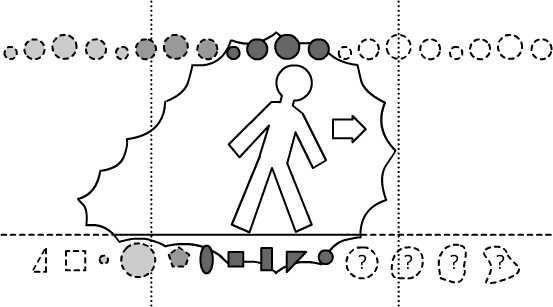Trending
Opinion: How will Project 2025 impact game developers?
The Heritage Foundation's manifesto for the possible next administration could do great harm to many, including large portions of the game development community.
Is there consensus that Reliability is a critical dynamic aspect of Experience?

Previous Post: An Experience Model
In the previous posts, a model that describes a static structure of Experience was defined and discussed. In this post, dynamic conditions will begin to be presented; starting with an assertion that Reliability is a critical condition that impacts all fundamental components of Experience. Everyone should feel encouraged to join the discussion and comment on or debate the assertions presented. All relevant comments are welcome and appreciated.

Reliability
Experience requires Reliability
Experiential elements are not absolute. As mentioned previously, Perception can differ from what our senses actually detect of the real world. Likewise, our Memory can falter, our Predictions can be off, our Cognitive Models as a whole are imperfect representations of the real world, as evidenced by simple differences in opinion and points of view. Yet in terms of how we use Experience, Reliability of these experiential elements is a crucial factor that impacts our ability to understand clearly, think creatively and operate effectively. Our Cognitive Models follow a progression of evaluation, revision and manipulation to align closer to what we perceive and understand to be, as a matter of Reliability. However, the factors that determine Reliability differ some for each of the components of Experience.
Perception relies on our ability to sense clearly those things within our Experience that we are currently concerned with. Reliability of Perception also depends on the objectivity of interpretation of those sensations when compared to our Cognitive Model of the world, so as to minimize the transformative effects of contextual reference. The Cognitive Models’ Reliability is determined primarily by our ability to make meaningful connections between discrete model subsets; those relationships between what we are currently attending to and other distinct elements of the Cognitive Model that are foundational, recent or pervasive to our current understanding. That is, the more interconnected the concern is to other Cognitive Model subsets and the more connected the concern is to things that are already considered reliable, the more reliable that concern is. Being that the other components of Experience are subsets of the Cognitive Model of the world, all are subject to this Reliability by association to other discrete model subsets. So, the Reliability of Memory is determined by this interconnectivity factor, which could also be described as its relative significance to us in the present, but it is also dramatically affected by the amount of attention paid to that experiential element. We are able to forcibly retain an experiential element of Memory that would otherwise be too disconnected to the rest of our Cognitive Model by spending effort to strengthen it through attention. Another way to look at that dynamic is that the longer time has passed since we last attended to an experiential element of Memory, the less reliable it becomes. Prediction is derived from, and strengthened by, the interconnectivity to reliable elements, but it too has its Reliability affected by another unique factor, which is the rhythmic or regular qualities of the subject of Prediction. We can more reliably predict those things that happen regularly, with rhythm or in sequence. Here we can see why Prediction heavily depends on all the other components of Experience just to remain reliable and relevant, let alone to be created in the first place.
In the version of the Experience diagram presented above, the vertical axis shows a measure of regularity for the concepts held in Experience. This is to indicate the relationship between the regularity (sequence, rhythm, etc.) and the resulting Reliability of the concepts for Prediction in particular. Along the top is a sequence of shapes presented over time that is relatively reliable to predict, due to its regularity, and to retain in Memory, due to its relevance and similarity to current concerns, such as the current Perception of the sequence. Along the bottom is an irregular sequence of shapes presented over time that is difficult to predict and difficult to maintain in Memory as relevance to the present wanes with the passage of time.
Next Post: Understanding and Attention
Read more about:
BlogsYou May Also Like